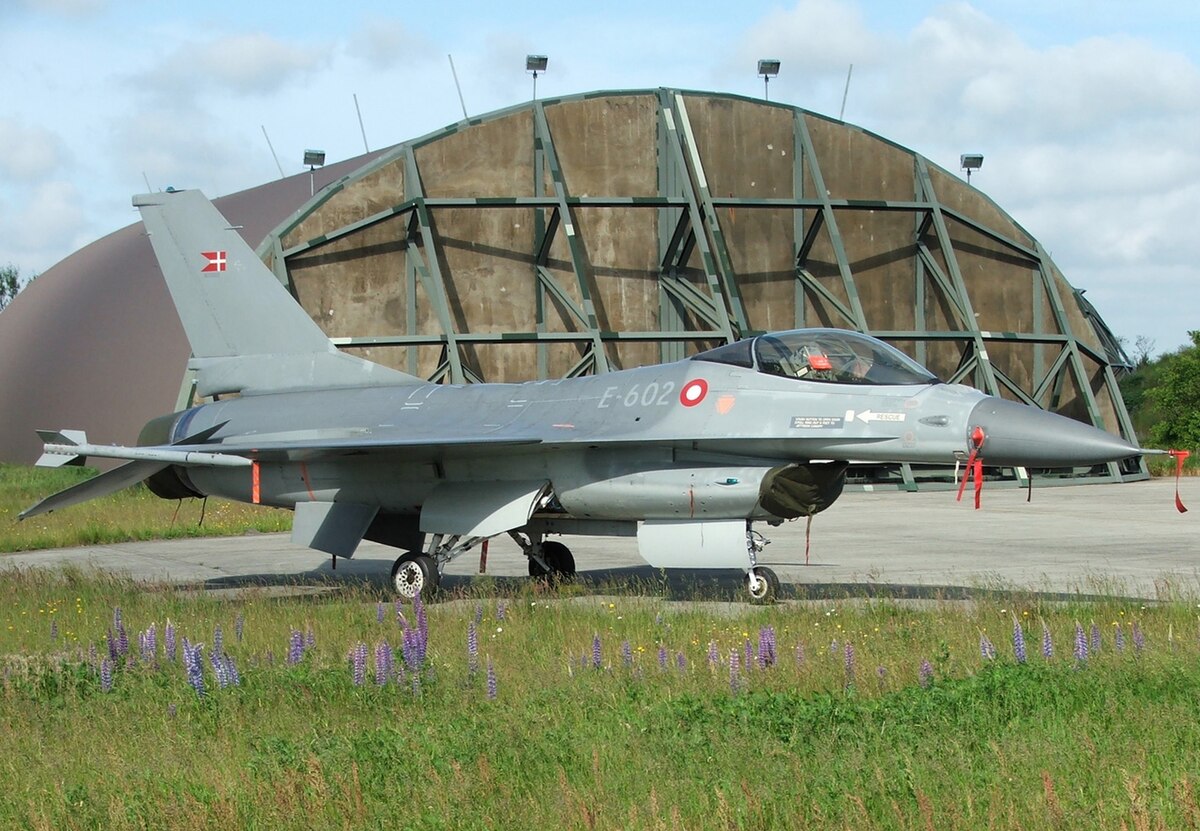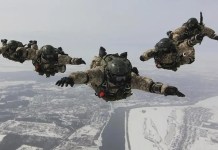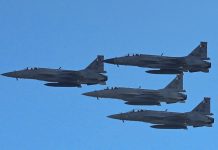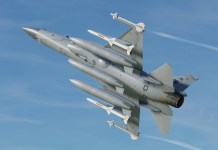The arrival of the F-16 fighter jets in Ukraine, as reported by many media outlets, marks a major enhancement to Ukraine’s defenses, which have been struggling against an increasingly hostile Russia. Meanwhile, Ukraine is also busy producing mock-ups of F-16 fighter jets as part of a deception strategy against enemy forces.
F-16 mock-ups are intended to mimic the presence of real combat aircraft at Ukrainian airfields, potentially serving as a disinformation tactic against adversaries.
The mock-up production follows the United States’ reported supply of high-quality inflatable F-16 replicas to Ukraine, but there was no confirmation of their use at Ukrainian Air Force airfields until now.
This tactic has gained importance as the arrival of actual F-16 fighters has started arriving in Ukraine.
Strategic Use Of Inflatables In Russia-Ukraine War
Both Russia and Ukraine have extensively employed mockups and inflatable decoys during their ongoing conflict.
This tactic, while not new, has been used effectively by both sides to deceive the enemy and protect valuable assets. Both militaries utilize decoys that mimic expensive and critical weapon systems, tricking opponents into wasting precision missiles. These decoys serve their purpose effectively, safeguarding troops and preserving invaluable equipment.
-
Ukraine’s Decoy Tactics
According to media reports, the first Ukrainian weapon system to be replicated as decoys was the Stugna anti-tank guided missile. The initial Stugna mockups were made from metal, plastic drainage pipes, and wood.
Ukraine later surprised Russia by using wooden mockups of HIMARS rocket systems. In August 2022, The Washington Post reported that the Russian army had been hunting these wooden decoys across Ukraine, with Moscow frequently boasting of their “destruction.”
According to the report, Russia wasted at least ten $6.5 million Kalibr cruise missiles on these decoys during the initial weeks of the HIMARS deployment.
In August 2023, Metinvest Group, owned by Ukrainian oligarch Rinat Akhmetov, announced the production of over 250 decoys of radar systems and D-20/D-30/M777 howitzers for the military. They also claimed that Russia destroyed a mock-up of Ukraine’s Malakhit radar.
In early July 2024, Ukraine’s air force claimed it successfully deceived Russian forces into targeting dummy versions of warplanes and air defense systems near Kryvyi Rih and Odesa. Prior to Ukraine’s announcement, Russia had claimed that its Iskander missiles destroyed a Ukrainian MiG-29 fighter jet at the Dovhyntseve airfield.
-
Russian Decoy Strategies
In April 2024, Russian sources suggested that their military had deployed inflatable decoys in a manner that made them easy for Ukrainian forces to locate. Russian forces would then wait a few days, replace the decoys with real tanks, and ambush unsuspecting Ukrainian forces.
During the ongoing Ukrainian counteroffensive in the Zaporizhzhya area, Russian forces have used decoy trenches to lure Ukrainian troops. These trenches are filled with dummies and improvised explosive devices (IEDs), which are detonated once Ukrainian forces begin clearing them.
Those not immediately killed or wounded are often targeted by subsequent Russian ambushes close to the trench line.
The widespread use of mockups and inflatable decoys in the Russia-Ukraine conflict highlights the enduring importance of deception in contemporary warfare. This ongoing “battle of wits” illustrates that in military strategy, creativity and cunning can be as vital as firepower and advanced technology.
Ukraine Receives First F-16 Fighter Jets
After a lengthy wait, Ukraine has finally received its first batch of F-16 fighter jets from the international coalition. This news was initially reported by Bloomberg on July 31, 2024, and later confirmed by a U.S. official to the Associated Press.
At the beginning of July, US President Joe Biden, Dutch Prime Minister Mark Rutte, and Danish Prime Minister Mette Frederiksen confirmed the transfer of F-16s to Ukraine.
“The long-awaited first tranche of F-16 fighter jets is in the process of being transferred to Ukraine from their European owners,” US Secretary of State Antony Blinken announced at the NATO public forum in Washington on July 10.
US and European leaders also expressed their gratitude to Belgium and Norway for their commitment to providing additional aircraft, as well as to the other members of the Air Force Capability Coalition for their support.
Denmark, the Netherlands, Belgium, and Norway have agreed to supply approximately 80 F-16s as part of an air force capability coalition for Ukraine, which includes 16 nations. Additionally, Denmark, Romania, the UK, and the US are hosting training for Ukrainian pilots on the F-16 jets.
Ukraine aims to deploy its first F-16 jets this summer to counter Russia’s air dominance. However, increased Russian bombing attacks on air bases complicate this effort.

F-16s Under Threat from Russia
Ukraine’s strategy involves countering Russia in the air war with the help of Western F-16 fighter jets. The F-16s, equipped with powerful electronic warfare systems and an array of other weapons, could be used in coordination with Western weapons like Patriot air-defense systems to expand the area deemed too dangerous for Russian pilots to fly.
They also aim to provide another layer of protection for Ukrainian cities and critical infrastructure from relentless missile and drone attacks.
However, the assaults on Ukrainian air bases highlight Russia’s determination to limit the impact of these combat planes before they enter the fight. Ukraine needs to ensure the protection of these jets before they can play a role in shaping the battlefield, and hardened shelters will play a key part.
Since the start of the conflict, Russia has been aggressively targeting Ukrainian airfields. Recent media reports indicate that the Russians are improving missiles and reconnaissance drones and pre-programming surveillance drones to fly deep into Ukraine without emitting telltale electronic signatures, making them harder to detect.
To counter this, Ukraine urgently needs new methods of destroying enemy drones and has been employing 1970s-vintage Yakovlev Yak-52 training planes to hunt Russian UAVs.
Additional Challenges for Ukraine
Beyond the Russian attacks, Ukraine faces several other obstacles as it prepares to deploy the sophisticated F-16s for the first time.
Ukrainian and U.S. military officials have highlighted a shortage of trained pilots, which will limit the new jets’ immediate effectiveness. Additionally, the F-16s will require substantial time for pilots to become proficient with them before they can be used to counter Russian attacks effectively.
Another constraint is the limited number of trained maintenance and support personnel available to keep the F-16s operational. This shortage could further impact the aircraft’s deployment and performance in the field.
How Many F-16s Does Ukraine Need?
A critical question surrounding the support for Ukraine is how many F-16s are required and how many will actually be delivered.
Currently, the number pledged for Ukraine stands at 79, a figure that President Zelensky and other Western leaders have stated is insufficient to counter Russia’s air power effectively.
However, according to a report from the Center for Strategic and International Studies (CSIS) think tank, Ukraine needs 12 F-16 squadrons, which equates to 216 aircraft, to adequately support land-based operations. This number would allow for the allocation of four squadrons each to the suppression of enemy air defenses, air interdiction, and counter-air operations.
While the exact number of aircraft included in the first tranche of deliveries remains unclear, as does their intended basing locations, the introduction of these fourth-generation aircraft represents a significant potential boost in capability for Ukraine. Until now, Ukraine has largely relied on Soviet-era MiG-29 and Su-27 combat jets to resist Russia’s invasion.
Role Of F-16s In Ukraine’s Defense
The General Dynamics F-16 Fighting Falcon, an American multi-role and air superiority fighter, was first introduced in 1978. Over the past 46 years, it has served as the backbone of more than two dozen air forces globally.
According to Statista, as of the end of 2022, 25 countries, including the US, Netherlands, Denmark, Türkiye, South Korea, Israel, Egypt, and Taiwan, have active F-16s in their fleets. There are approximately 2,810 active F-16 aircraft worldwide, with around 156 additional orders placed.
According to a 2023 RAND report, these aircraft could be crucial in developing “local air superiority,” enhancing Ukraine’s ability to defend its airspace and conduct offensive operations effectively. Experts anticipate that the F-16s will serve two primary roles in Ukraine: defensive and offensive. Armed with AGM-88 HARM (High-speed Anti-Radiation Missile) weapons, the F-16s are capable of targeting Russian surface-to-air missile (SAM) systems.
The U.S. is set to equip the F-16s being sent to Ukraine with advanced weaponry. The Pentagon will provide the jets with air-to-ground munitions, precision-guidance kits for bombs, and advanced air-to-air missiles, all in sufficient quantities to address Ukraine’s most pressing needs in its conflict with Russia, as reported by the Wall Street Journal this week.
Conclusion
The introduction of F-16 fighter jets represents a potential game-changer in Ukraine’s ongoing conflict with Russia. These advanced aircraft could significantly enhance Ukraine’s air capabilities.
However, the effectiveness of the F-16s will hinge on Ukraine’s ability to protect these valuable assets from Russian attacks, train an adequate number of personnel, and seamlessly integrate the F-16s into its existing defense infrastructure.
While the F-16s offer substantial potential, they are not a panacea for Ukraine’s challenges. Their true impact will be determined by how effectively Ukraine can navigate the multifaceted obstacles it faces.




